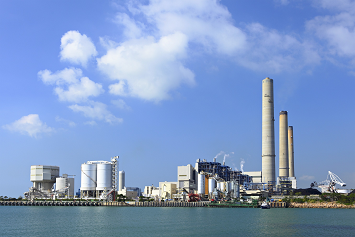Nearly 2 years after it was issued in preliminary form, the EPA has announced the availability of its final 2016 Effluent Guidelines Program Plan. Section 304(m) of the Clean Water Act requires the Agency to biennially publish a plan for new and revised effluent limitations guidelines after public review and comment. The intent of a final plan is to identify any new or existing industrial categories selected for effluent guidelines or pretreatment standards and provide a schedule for their development.

Guidelines for Electric Power Plants
The major component of the Final 2016 Plan is EPA’s ongoing rulemaking for the steam electric power generating point source. The Agency wants to amend certain parts of the 2015 (Obama-era) rule that established effluent limitation guidelines and standards for steam electric power generating facilities. The 2015 rule comprised limitations and standards for various wastestreams, specifically, fly ash transport water, bottom ash transport water, flue gas mercury control wastewater, flue gas desulfurization (FGD) wastewater, gasification wastewater, and combustion residual leachate. In early 2017, the Agency was petitioned to reconsider the 2015 rule. In September 2017, the EPA announced that it was postponing the compliance dates for best available technology economically achievable (BAT) effluent limitations and pretreatment standards for existing sources (PSESs) for bottom ash transport water and FGD until November 1, 2020, at the earliest, while it completes new rulemaking relevant to these standards. Compliance dates for the remaining guidelines and standards were unchanged.
Preliminary and Final Plans Differ
The 2016 preliminary plan makes no mention of the steam electric power generating point source category except to say that the 2015 rule had been issued. Also, in the 2016 preliminary plan, the EPA said it was reviewing guidelines for the battery manufacturing and electrical and electronic components manufacturing sectors in light of the changes these sectors have experienced since the existing guidelines were issued in the 1980s. Also, in the preliminary plan, the Agency said it was continuing its investigation to determine if existing guidelines for the iron and steel manufacturing; organic chemicals, plastics, and synthetic fibers; and pulp, paper, and paperboard categories adequately addressed certain pollutants facilities in these sectors are discharging.
In the Final 2016 Plan, the EPA says that except for the steam electric power generating point source rulemaking, it has concluded that no new or revised effluent guidelines are warranted at this time.
Two Studies
The Agency also announced that it is undertaking two new studies.
One study will look “holistically” at the management of oil and gas extraction wastewater from onshore facilities. “The focus of this study is not to look specifically at any one existing effluent guideline,” says the Agency. “Rather, the EPA intends to engage with stakeholders to evaluate approaches to manage both conventional and unconventional oil and gas extraction wastewater from onshore facilities, including, but not limited to, an assessment of technologies for facilities that treat and discharge oil and gas extraction wastewater.”
The second study addresses the electrical and electronic components point source category and will focus on changes within the industry since the 1983 rulemaking, particularly as these changes pertain to wastewater characteristics and wastewater treatment technologies.
EPA’s announcement of availability of its Final 2016 Plan was published in the May 2, 2018, Federal Register (FR).
